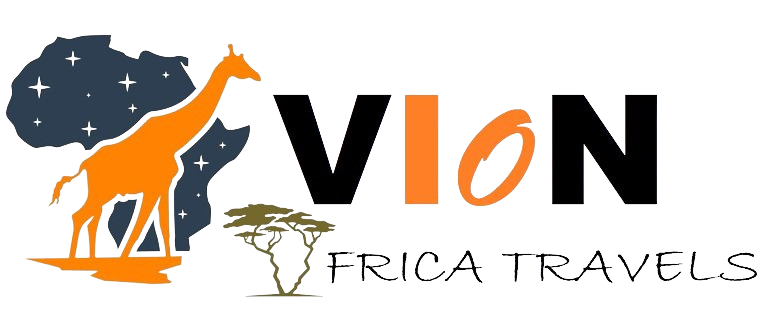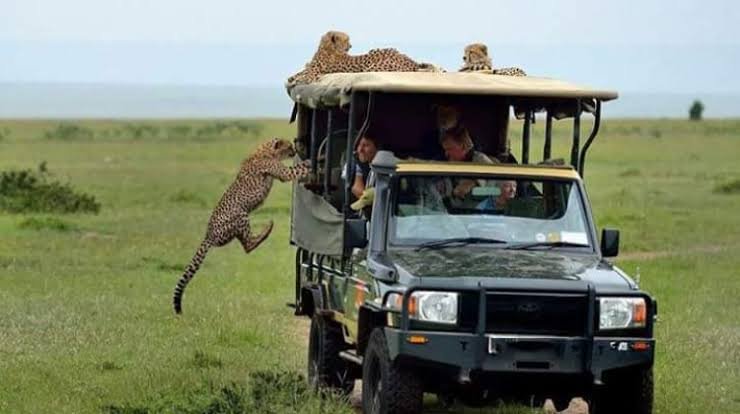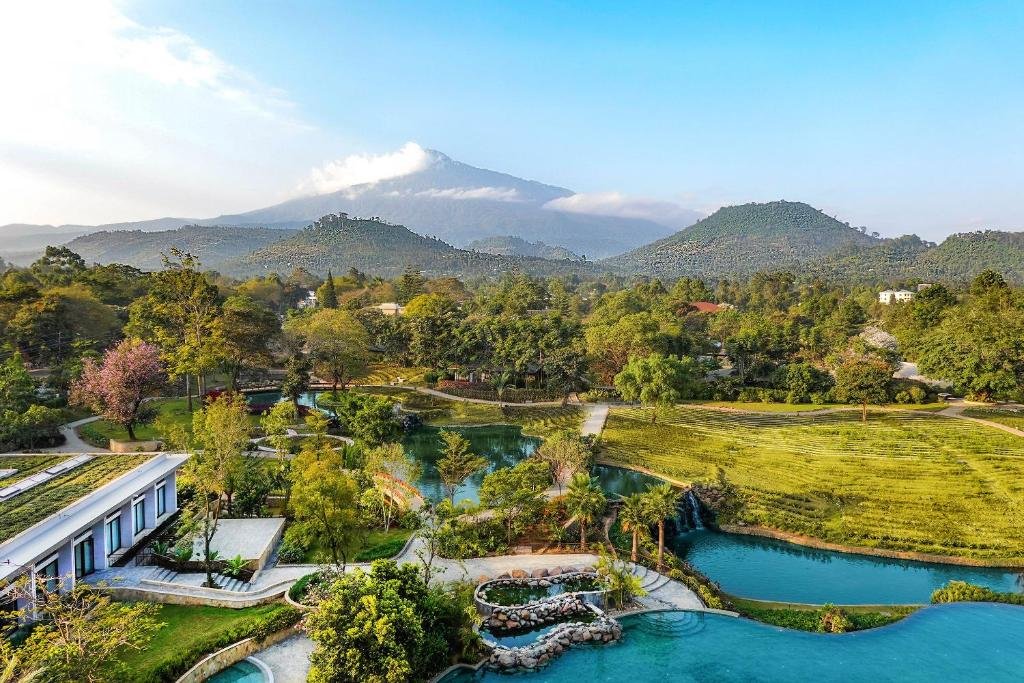Tanzania, renowned for its breathtaking landscapes and rich wildlife, is a premier destination for safari enthusiasts. From the iconic Serengeti to the stunning Ngorongoro Crater, the country offers an array of unforgettable experiences for those looking to immerse themselves in nature. Planning your dream Tanzania safari requires careful consideration of various factors, including timing, destinations, accommodations, and activities. This comprehensive guide will help you navigate the intricacies of safari planning, ensuring that your adventure is nothing short of extraordinary.
1. Understanding the Basics of a Tanzania Safari
What is a Safari?
The term “safari” originates from the Swahili word meaning “journey.” While safaris are primarily associated with wildlife viewing in Africa, they encompass a variety of experiences, including cultural immersion, adventure activities, and breathtaking landscapes. A Tanzania safari allows you to observe wildlife in their natural habitat while enjoying the country’s stunning scenery.
Why Choose Tanzania?
Tanzania is home to some of the most famous national parks and wildlife reserves in Africa, making it a top choice for safari-goers. Here are some reasons to consider Tanzania for your safari adventure:
- Diverse Wildlife: Tanzania boasts an impressive range of wildlife, including the Big Five (lion, leopard, elephant, buffalo, and rhinoceros) and countless other species.
- Stunning Landscapes: From the vast plains of the Serengeti to the lush forests of Tarangire, Tanzania’s landscapes are incredibly diverse.
- Cultural Experiences: Interacting with local tribes, such as the Maasai, adds depth to your safari experience.
- Accessibility: Tanzania’s well-developed infrastructure makes it easy to travel between parks and reserves.
2. Choosing the Best Time for Your Safari
The timing of your safari can significantly impact your experience. Here’s a breakdown of the seasons in Tanzania:
Dry Season (June to October)
The dry season is the most popular time for safaris. Wildlife is easier to spot as animals congregate around water sources. Key events during this period include:
- Great Migration: The annual migration of wildebeest and zebras typically peaks in July and August, making it an excellent time to witness this extraordinary phenomenon.
- Clear Weather: Expect sunny days and cooler temperatures, making it comfortable for outdoor activities.
Wet Season (November to May)
The wet season sees fewer tourists and offers a different experience:
- Lush Landscapes: The parks are beautifully green, and wildlife is abundant due to the availability of food and water.
- Birdwatching: This is the best time for birdwatchers, as migratory birds flock to Tanzania during this season.
- Lower Prices: Accommodations and tours are often cheaper during the wet season, making it an affordable option for travelers.
Shoulder Seasons
The shoulder seasons (late October to November and late May to early June) can offer a balance of good wildlife viewing and fewer crowds. Consider planning your safari during these months for a more tranquil experience.
3. Selecting Your Safari Destinations
Tanzania is home to several remarkable national parks and reserves, each offering unique wildlife and landscapes. Here are some must-visit destinations for your safari:
Serengeti National Park
The Serengeti is the crown jewel of Tanzania’s wildlife parks, famous for its vast savannahs and incredible wildlife diversity. Highlights include:
- The Great Migration: Witness millions of wildebeest and zebras migrating in search of greener pastures.
- Big Cat Viewing: The Serengeti is home to a large population of lions, leopards, and cheetahs, making it a prime destination for big cat enthusiasts.
Ngorongoro Crater
The Ngorongoro Crater is a UNESCO World Heritage site and one of the most unique ecosystems on the planet. Key features include:
- Diverse Wildlife: The crater is home to a dense concentration of wildlife, including elephants, rhinos, and flamingos.
- Scenic Views: Enjoy breathtaking panoramic views from the crater rim.
Tarangire National Park
Tarangire is often overlooked but is an incredible destination for wildlife viewing. Notable aspects include:
- Large Elephant Herds: The park is famous for its large populations of elephants and baobab trees.
- Year-Round Water Sources: Tarangire’s rivers and swamps attract wildlife throughout the year, making it a great destination outside the migration season.
Lake Manyara National Park
Lake Manyara is known for its diverse ecosystems and stunning scenery. Highlights include:
- Tree-Climbing Lions: The park is famous for its unique tree-climbing lions, offering a rare sight.
- Birdwatching: With over 400 bird species, it’s a paradise for bird lovers.
Ruaha National Park
Ruaha is Tanzania’s largest national park and is known for its remote beauty. Key features include:
- Untamed Wilderness: Experience a sense of solitude and adventure in this less-visited park.
- Rich Wildlife: Ruaha is home to a large population of elephants, lions, and wild dogs.
Selous Game Reserve
Selous is one of Africa’s largest game reserves and is less commercialized than national parks. Highlights include:
- Diverse Ecosystems: The reserve encompasses lakes, rivers, and wetlands, supporting a variety of wildlife.
- Unique Activities: Selous offers walking safaris and boat safaris, providing a different perspective on wildlife viewing.
4. Deciding on Your Safari Type
There are various safari types to consider when planning your trip, each offering a unique experience:
4.1. Game Drives
Game drives are the most popular way to explore Tanzania’s national parks. Key points include:
- Open Safari Vehicles: Most lodges and tour operators provide open-sided vehicles for optimal wildlife viewing.
- Guided Tours: Knowledgeable guides enhance the experience by sharing insights about the wildlife and ecosystems.
4.2. Walking Safaris
For the adventurous traveler, walking safaris offer a closer connection to nature. Benefits include:
- Immersive Experience: Walking allows you to explore the environment at a slower pace and notice details often missed from a vehicle.
- Expert Guides: Professional guides lead walking safaris, sharing their knowledge of animal tracks, plants, and the ecosystem.
4.3. Boat Safaris
Boat safaris provide a unique perspective on wildlife and are particularly popular in areas like Selous and Lake Manyara. Advantages include:
- Water-Based Viewing: Observe animals as they come to the water’s edge, including hippos, crocodiles, and a variety of bird species.
- Tranquil Experience: Enjoy the serene atmosphere while gliding across the water.
4.4. Hot Air Balloon Safaris
For a truly unforgettable experience, consider a hot air balloon safari over the Serengeti. Highlights include:
- Stunning Views: Witness the breathtaking landscapes and wildlife from above at sunrise.
- Post-Flight Breakfast: Enjoy a celebratory breakfast in the bush after your flight.
5. Finding the Right Accommodations
Choosing the right accommodations is crucial for a comfortable safari experience. Options vary from luxury lodges to budget-friendly campsites:
Luxury Lodges and Tented Camps
For a lavish experience, consider luxury lodges or tented camps. Benefits include:
- Comfort and Amenities: Enjoy spacious accommodations, fine dining, and personalized service.
- Exclusive Locations: Many luxury lodges are located near prime wildlife viewing areas.
Mid-Range Options
Mid-range lodges and camps provide a balance between comfort and cost. Key features include:
- Comfortable Accommodations: Enjoy cozy rooms with essential amenities without breaking the bank.
- Guided Safaris: Most mid-range options include guided game drives and activities.
Budget Camping
For those seeking a more adventurous experience, budget camping options are available. Highlights include:
- Authentic Experience: Camping in the bush allows you to immerse yourself in nature.
- Affordability: Budget camping is a cost-effective way to experience Tanzania’s wildlife.
Choosing the Right Location
Consider the proximity of accommodations to national parks and reserves. Staying closer to the park entrance can save travel time and allow for more time spent on game drives.
6. Preparing for Your Safari
Proper preparation is essential for a successful safari experience. Here are some tips to help you get ready:
Packing Essentials
When packing for your Tanzania safari, consider the following items:
- Clothing: Lightweight, breathable clothing in neutral colors is best. Pack layers for cooler mornings and evenings. Don’t forget a hat, sunglasses, and a scarf for protection from dust and sun.
- Footwear: Comfortable walking shoes and sandals are essential for game drives and walking safaris.
- Binoculars and Camera: Bring binoculars for wildlife viewing and a camera to capture unforgettable moments. Consider a zoom lens for close-up shots of animals from a distance.
- Sunscreen and Insect Repellent: Protect yourself from the sun and insect bites, especially in the evenings.
Health Precautions
Before traveling to Tanzania, consult your healthcare provider about vaccinations and medications. Key considerations include:
- Yellow Fever Vaccination: Required for entry into Tanzania if traveling from a country with a risk of yellow fever transmission.
- Malaria Prevention: Consult your doctor about antimalarial medication and take precautions to avoid mosquito bites.
Travel Insurance
Consider purchasing travel insurance to protect yourself against unforeseen circumstances, including trip cancellations, medical emergencies, and lost luggage.
7. Understanding the Local Culture
Experiencing the local culture is an integral part of a Tanzania safari. Here are some aspects to consider:
Interacting with Local Communities
Many safari operators offer opportunities to engage with local tribes, such as the Maasai and Hadza. Respectful interactions can enhance your understanding of their way of life.
Cultural Etiquette
- Dress Appropriately: When visiting villages or cultural sites, dress modestly and respectfully.
- Ask Permission: Always ask for permission before taking photographs of people, especially in local communities.
8. Safety Considerations
While Tanzania is generally safe for tourists, it’s important to take precautions:
Wildlife Safety
- Follow Guidelines: Always listen to your guide and follow safety guidelines during game drives and walking safaris.
- Stay in the Vehicle: Remain inside your vehicle during game drives unless instructed otherwise.
Personal Safety
- Secure Valuables: Keep your belongings secure and avoid displaying expensive items in public.
- Stay Alert: Be aware of your surroundings and avoid isolated areas, especially at night.
9. Finalizing Your Itinerary
Once you’ve decided on your destinations, safari type, and accommodations, it’s time to finalize your itinerary. Consider the following tips:
Flexibility
While it’s essential to have a well-planned itinerary, allow for flexibility. Wildlife viewing can be unpredictable, and you may want to adjust your plans based on recent sightings or weather conditions.
Local Guides
Hiring local guides enhances your experience. They possess valuable knowledge of the area and can help you spot wildlife that you might miss on your own.
10. Conclusion: Your Dream Tanzania Safari Awaits
Planning your dream Tanzania safari may seem overwhelming at first, but with careful consideration and preparation, you can create an unforgettable adventure. From choosing the best time to visit to selecting the right destinations and accommodations, each step brings you closer to experiencing the stunning beauty and incredible wildlife of Tanzania.
Embrace the journey, immerse yourself in the vibrant culture, and connect with nature in one of the most magnificent countries on earth. Your dream safari awaits—start planning today!



